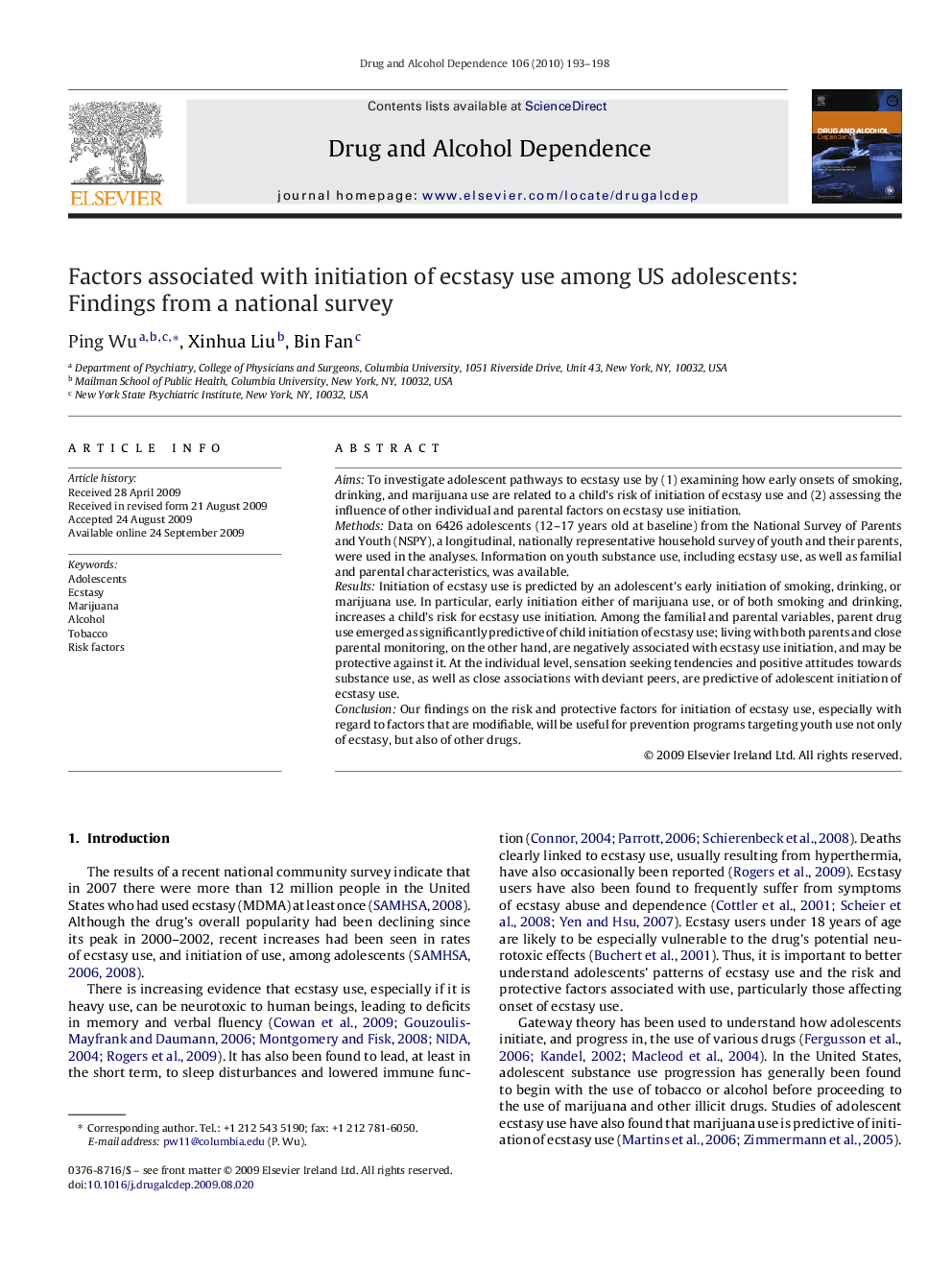| Article ID | Journal | Published Year | Pages | File Type |
|---|---|---|---|---|
| 1070453 | Drug and Alcohol Dependence | 2010 | 6 Pages |
AimsTo investigate adolescent pathways to ecstasy use by (1) examining how early onsets of smoking, drinking, and marijuana use are related to a child's risk of initiation of ecstasy use and (2) assessing the influence of other individual and parental factors on ecstasy use initiation.MethodsData on 6426 adolescents (12–17 years old at baseline) from the National Survey of Parents and Youth (NSPY), a longitudinal, nationally representative household survey of youth and their parents, were used in the analyses. Information on youth substance use, including ecstasy use, as well as familial and parental characteristics, was available.ResultsInitiation of ecstasy use is predicted by an adolescent's early initiation of smoking, drinking, or marijuana use. In particular, early initiation either of marijuana use, or of both smoking and drinking, increases a child's risk for ecstasy use initiation. Among the familial and parental variables, parent drug use emerged as significantly predictive of child initiation of ecstasy use; living with both parents and close parental monitoring, on the other hand, are negatively associated with ecstasy use initiation, and may be protective against it. At the individual level, sensation seeking tendencies and positive attitudes towards substance use, as well as close associations with deviant peers, are predictive of adolescent initiation of ecstasy use.ConclusionOur findings on the risk and protective factors for initiation of ecstasy use, especially with regard to factors that are modifiable, will be useful for prevention programs targeting youth use not only of ecstasy, but also of other drugs.
